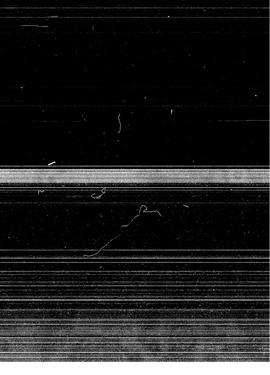| dc.contributor.author | Vaughn, Caryn Carpenter, | en_US |
| dc.date.accessioned | 2013-08-16T12:29:06Z | |
| dc.date.available | 2013-08-16T12:29:06Z | |
| dc.date.issued | 1984 | en_US |
| dc.identifier.uri | https://hdl.handle.net/11244/5245 | |
| dc.description.abstract | The life history and microdistribution of Helicopsyche borealis was compared for a 13-month period in two Oklahoma streams that have different thermal regimes. Densities of H. borealis were usually higher in the thermally constant stream. The species was multivoltine with overlapping generations in the thermally constant stream and univoltine in the fluctuating stream. | en_US |
| dc.description.abstract | Differences between age groups may be related to use of different food and case building materials. Heavier cases of later instars apparently act as ballast allowing these larger herbivores access to food patches in fast-flowing microhabitats not available to the early instars. Importance of food was demonstrated by experiments in which all stages preferred food-saturated to food-depleted portions of substrata. In other experiments, drift rates of all stages increased with food deprivation. A field colonization experiment showed that larval densities on artificial substrata were highest in areas of high algal chlorophyll a. When offered a choice of three potential foods--a diatom, a green filamentous or a bluegreen filamentous alga--larvae showed no preference. Numbers of emerging adults were greatest on green algae and diatoms. | en_US |
| dc.description.abstract | A field study showed that late instars use larger sand particles in the outer coil of their case under high current velocities. Although these larger particles serve as ballast in fast water, the results of a laboratory experiment indicate that particles are used according to availability. Becase larvae use increasingly larger particles in their case as they mature, the availability of the appropriately-sized sand grains may be a secondary factor in their age-specific microdistribution. | en_US |
| dc.description.abstract | Hydrodynamics and crushing resistance are proposed as compatible selection pressures for the evolution of the helical case. The helical architecture of the case provides ballast and a shape which make the larvae well suited for grazing on exposed surfaces in high-flow environments. The helical shape also provides greater resistance to crushing than other caddisfly cases, allowing H. borealis to exploit the hyporheios in some streams. | en_US |
| dc.description.abstract | Helicopsyche borealis exhibited an age-specific preference for depth and current velocity. Age-specific patterns were further documented by laboratory and field experiments in which early instars aggregated on the tops of periphyton-covered substrata in slow water but drifted in fast water. Later instars were more evenly dispersed on the different substratum surfaces and drifted less frequently. | en_US |
| dc.format.extent | vii, 93 leaves : | en_US |
| dc.subject | Biology, Ecology. | en_US |
| dc.title | Ecology of Helicopsyche borealis (Hagen) (Trichoptera : helicopsychidae) : | en_US |
| dc.type | Thesis | en_US |
| dc.thesis.degree | Ph.D. | en_US |
| dc.thesis.degreeDiscipline | Department of Biology | en_US |
| dc.note | Source: Dissertation Abstracts International, Volume: 45-05, Section: B, page: 1369. | en_US |
| ou.identifier | (UMI)AAI8418594 | en_US |
| ou.group | College of Arts and Sciences::Department of Biology | |
